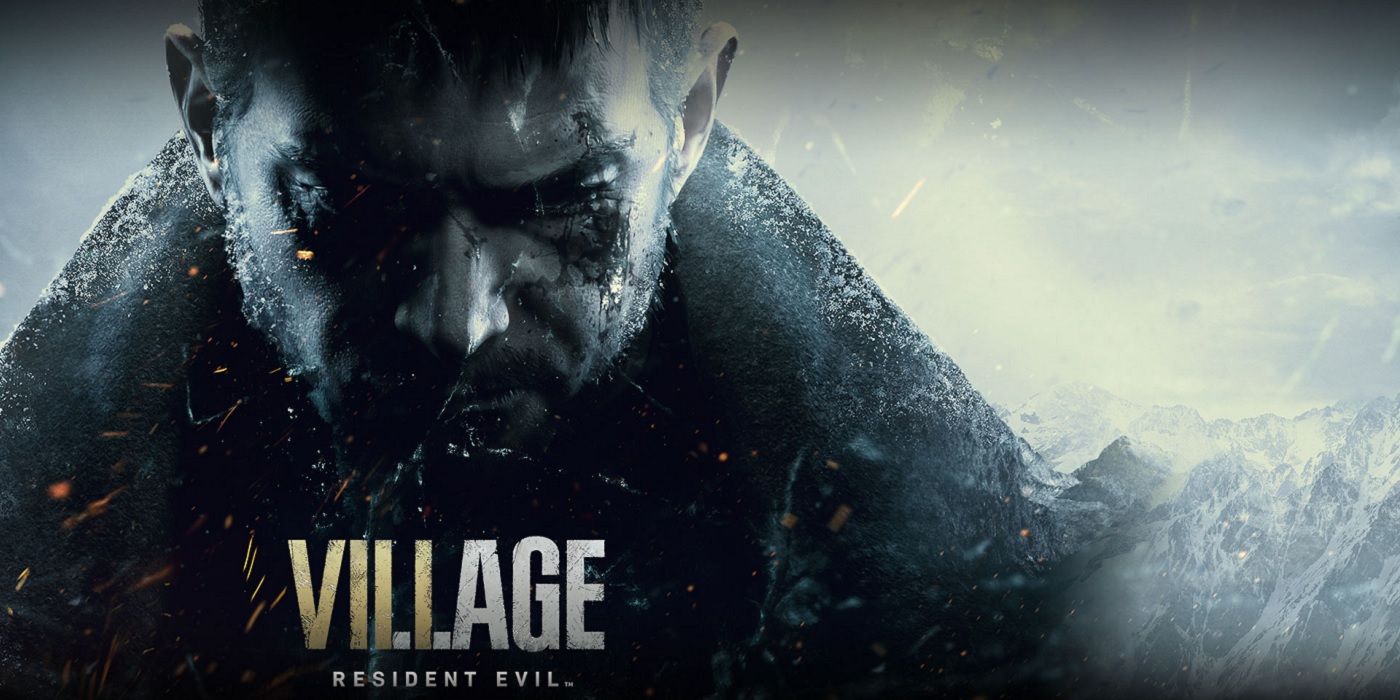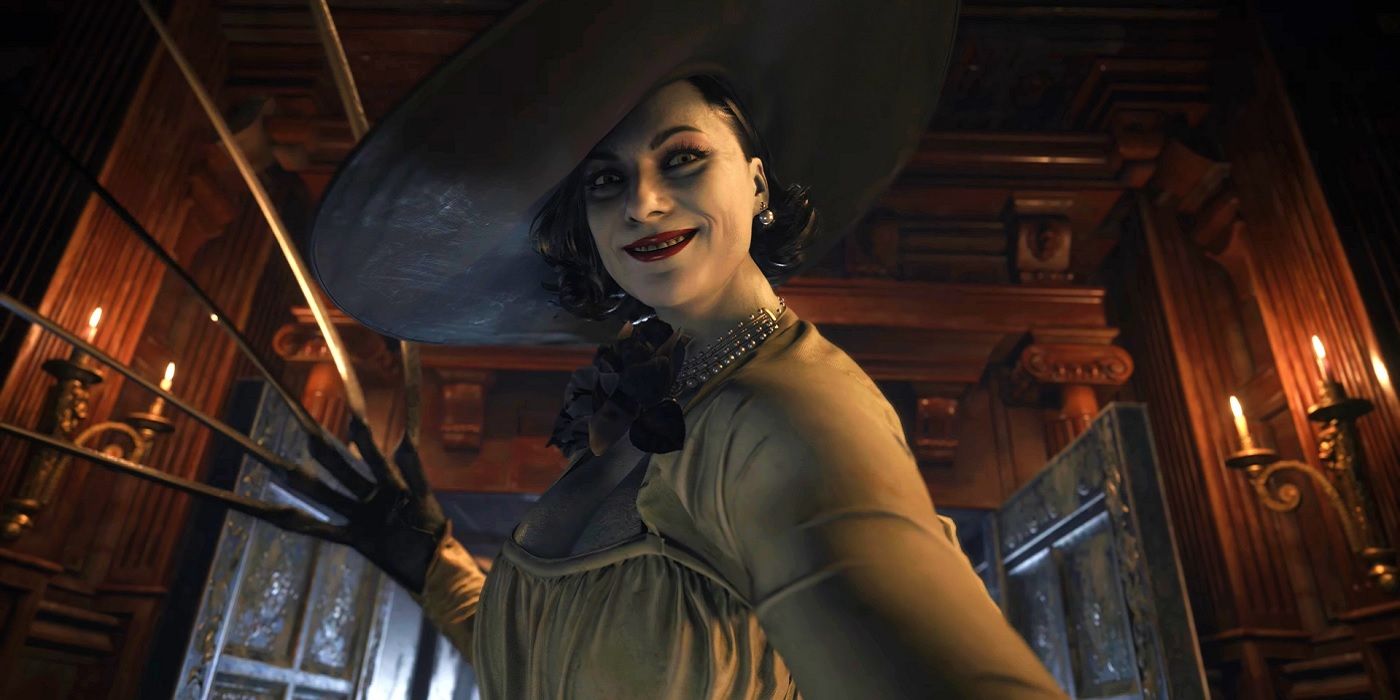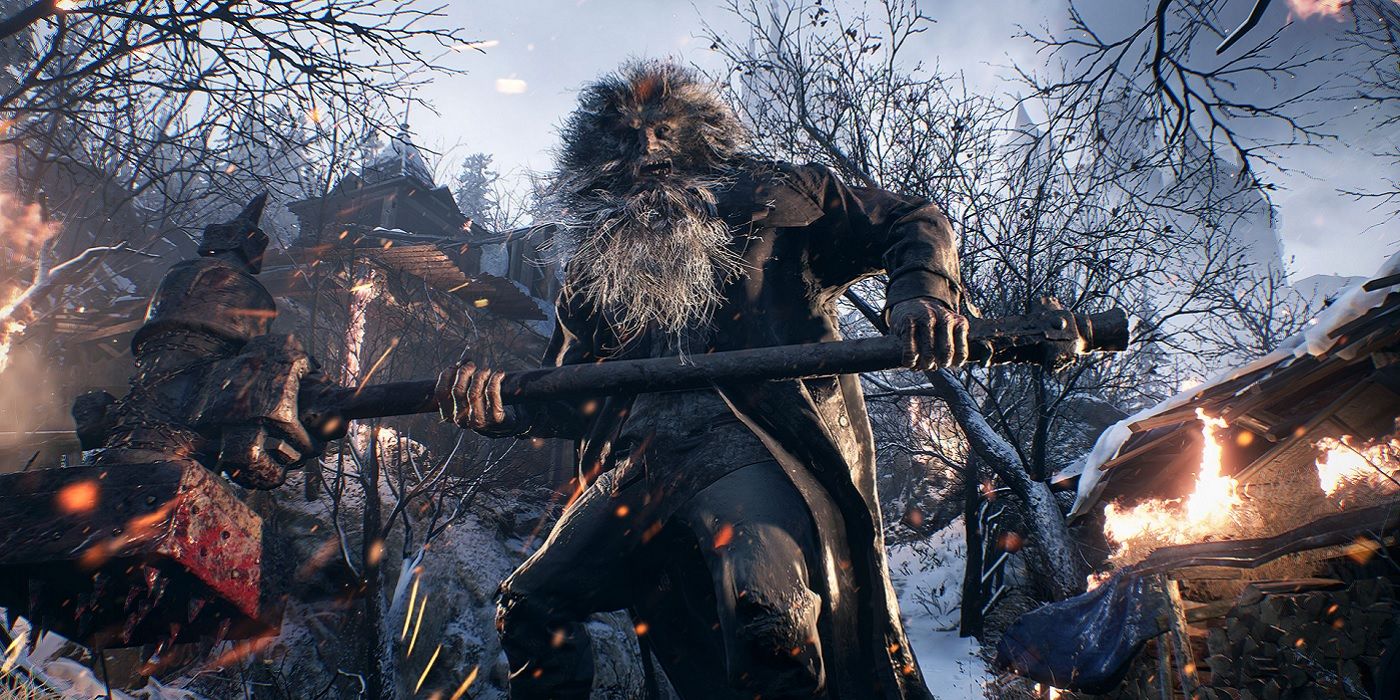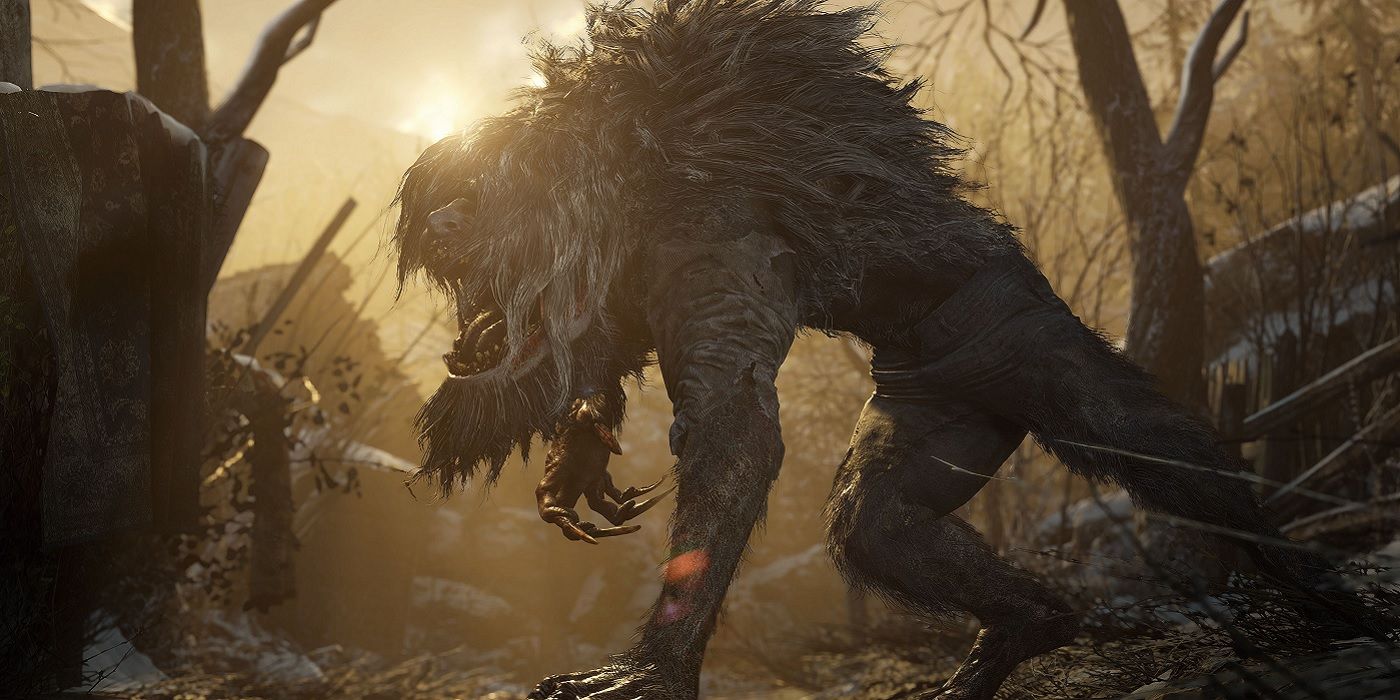Resident Evil Village Review | Game Rant

With Resident Evil 7, Capcom took its long-running survival-horror franchise in bold new directions while simultaneously taking it back to its horror roots. Despite Resident Evil 7 using a first-person perspective, the game was still very much a classic Resident Evil title, seemingly taking inspiration from the original Resident Evil with its setting and puzzles. Resident Evil Village continues what Resident Evil 7 started by retaining the first-person view, but this time takes inspiration from Resident Evil 4 and the more action-oriented games in the series.
Set a few years after the events of Resident Evil 7, protagonist Ethan Winters and his wife Mia have settled down in a rural European town, where they have tried to live a normal life with their baby daughter Rose. Unfortunately, their peace doesn't last too long, and after a shocking confrontation with series veteran Chris Redfield, Ethan finds himself stranded in a mountain village with his daughter in the clutches of the villainous Mother Miranda and her four Lords.
Resident Evil Village's rural European setting immediately calls to mind Resident Evil 4, and the similarities between the two games don't stop there. Everything from Resident Evil Village's inventory system to its greater focus on action callback to Leon S. Kennedy's groundbreaking adventure. But since Ethan wasn't all that combat savvy in Resident Evil 7, some fans may be wondering why he's all of a sudden mowing down hordes of enemies in the new game.

It's implied that Ethan has been getting intensive training from Chris Redfield in the years since Resident Evil 7's conclusion to prepare him in case he ever found himself in another life-threatening situation. Ethan puts those skills to good use in Resident Evil Village, utilizing a deeper arsenal of weapons as he fights against crazed villagers, wolf-like creatures called Lycans, and some other monsters that he bumps into in his search for his daughter. Anyone that felt Resident Evil 7 didn't have enough action will likely be much happier with Resident Evil Village in that regard, as there's a lot more shooting and many more enemy types for Ethan to contend with.
Unfortunately, there is something lost with this renewed focus on action over scares. Capcom itself has admitted that Resident Evil Village isn't as scary as Resident Evil 7, and that will be readily apparent to anyone that plays through it. There are a couple of startling moments, but the game doesn't seem concerned with making players truly afraid of anything. None of the monsters pose that significant of a threat to Ethan, and even the bosses are dispatched rather easily.
The biggest letdown in this regard is easily Lady Dimitrescu. Heavily featured in the game's promotional materials, Resident Evil Village's Lady Dimitrescu has become the face of the new game, even though her role is overall not that significant in the grand scheme of things. Much has been said about how Lady Dimitrescu stalks Ethan around her castle like Mr. X from Resident Evil 2, but once it becomes clear that Ethan can easily outrun and outmaneuver her, she becomes infinitely less intimidating.

Gameplay-wise, Resident Evil Village's villains are a step down from Resident Evil 7's Baker family, but in terms of lore, they are more interesting. Each of Mother Miranda's Lords also has a unique look to them and special powers that come into play in their section of the game world. This results in varied environments and engaging cutscenes, even if players may come away feeling like these supposedly ultra-powerful beings are pushovers. They may not be all that compelling to fight, but it is fun learning more about Lady Dimitrescu and the game's other Lords.
While players are out slaughtering Resident Evil Village's villains and monsters, they will also be doing a great deal of exploration. The village in the game's title serves as a sort of hub area that branches off into each major section of the game. As players progress through the story, they will get new keys and other items that will allow them to explore the village further, turning up treasures and special weapons that will give them an even greater edge over their enemies.
Treasures and other points of interest are marked on the map at a certain point in the game, making it easy for Resident Evil Village players to check out all the side content. When compared to most other games in the series, there's quite a bit of side content in Resident Evil Village, which, combined with New Game+ and multiple difficulty levels, boosts the game's replay value significantly.

One drawback when it comes to Resident Evil Village's hub area is that it can become easy to get lost, and even when referencing the map, it's not always clear how to get to where players need to go. This is an issue a couple of times in the game as well, and it really serves to grind the pacing down to a halt. However, players should be able to find their way back to the right path with enough running around.
Even if players do get lost in Resident Evil Village, at least they will have plenty of pretty scenery to look at. Resident Evil Village uses ray-tracing to great effect on next-generation consoles, with its lighting easily the most impressive thing about it visually. The game is not a mind-blowing next-gen graphics showcase like one may have hoped, but it still looks fantastic and is the best-looking Resident Evil game to date.
Resident Evil Village's gorgeous graphics go hand in hand with its impressive level of polish, with zero technical issues or visual hiccups of any kind encountered during our time with the game. To sweeten the pot, Resident Evil Village has virtually no load times and runs perfectly, on the PS5 at least.

Resident Evil Village is a huge step forward when it comes to graphics and general performance, but it also makes some important quality-of-life improvements that fans will appreciate. A big one is that Resident Evil Village lets players skip cut-scenes, which was not always possible in its predecessor. This makes replaying Resident Evil Village a much more appealing prospect, and is another big boost for its replay value.
Resident Evil Village can be completed in about eight hours on a first playthrough, though it's possible to beat it in under three hours as well. Nearly every Resident Evil game is short, but they make up for it by giving players good reasons to go back through the game. Resident Evil Village's replay value is through the roof, with a ton of unlockable content like the returning Mercenaries Mode giving players even more to do once they've wrapped up the main story.
Resident Evil Village brings Mercenaries Mode back, challenging players to kill as many enemies as possible within a certain time limit in stages pulled from the main game. The mode isn't quite as fully-featured as it was in previous games, but it's still a fun enough diversion and is good for anyone who wants a quick fix of Resident Evil Village's combat without diving into the story again.

Resident Evil Village's story is somewhat of a mixed bag. There are elements to it that will have players rolling their eyes as it can't help but fall into the same-old Resident Evil cliches for many of its story beats. But at the same time, Resident Evil Village also makes some rather bold moves, setting up the inevitable Resident Evil 9 to potentially have an especially interesting story whenever it comes out.
Resident Evil Village doesn't have the most engrossing or satisfying story in Resident Evil history, and its more action-oriented approach is likely to disappoint fans that enjoyed RE7's pure horror. However, Resident Evil Village is packed with replay value, rarely has a dull moment, and should leave Resident Evil fans excited for the franchise's future.
Resident Evil Village is out now for PC, PS4, PS5, Stadia, Xbox One, and Xbox Series X. Game Rant was provided a PS5 code for this review.

Post a Comment